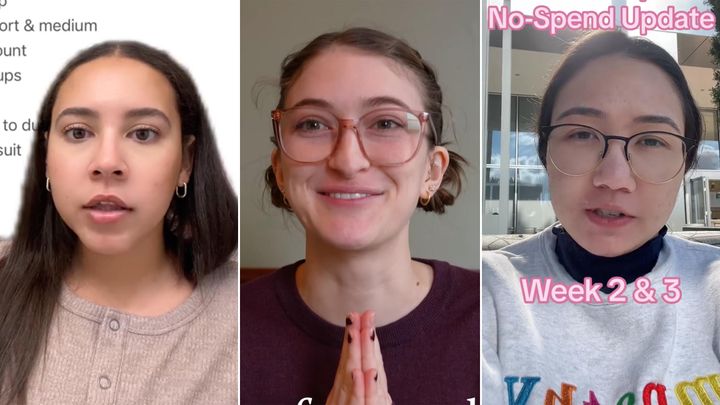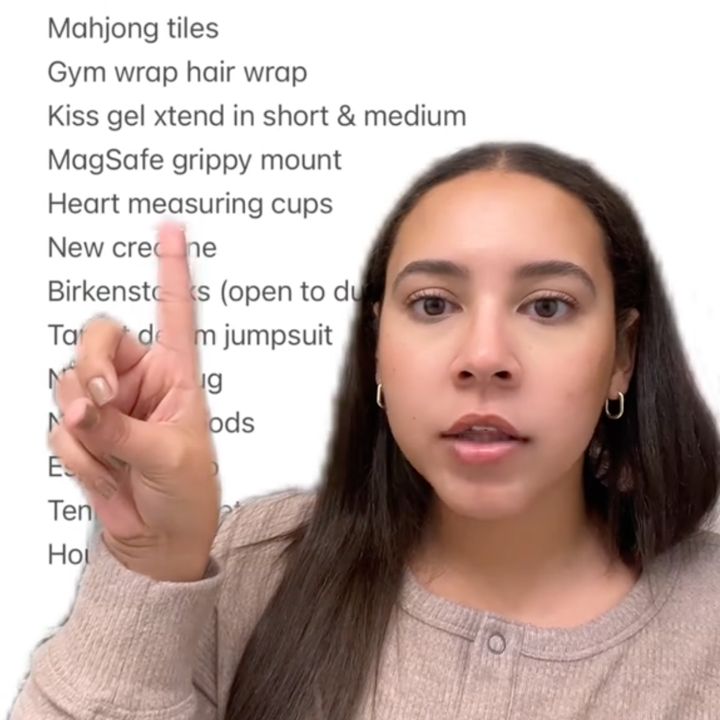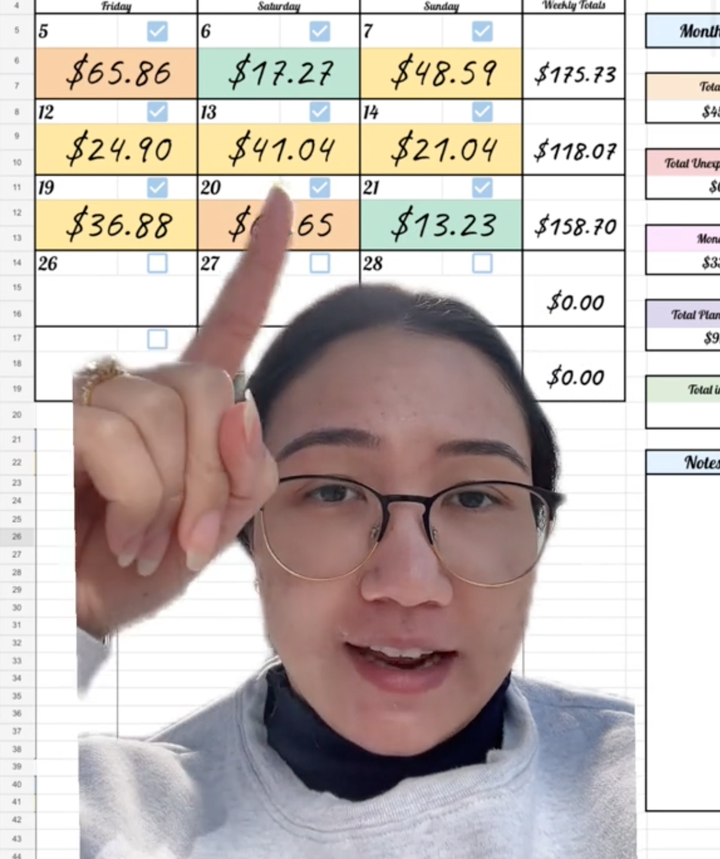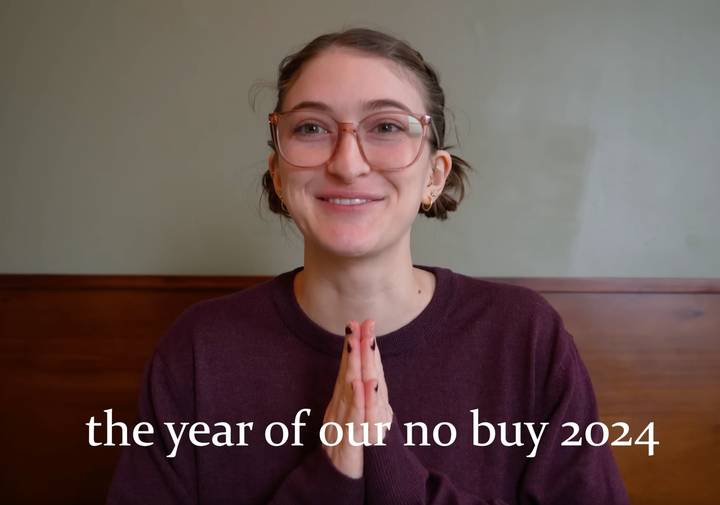
For Grace Nevitt, the new year kicked off with a no-buy challenge.
“I felt like my money was kind of just leaking out in random places. I was ... looking at my statements being like, ‘OK, where did all this money go?’” she said, adding that it was “time to just start fresh and try something completely crazy.”
Nevitt, a New York City-based swing, or alternate, for a Broadway show’s wardrobe department, only bought things that were a “complete necessity” in January. Aside from allowing herself to have two takeout meals per week, she will only spend money on essentials like groceries, toilet paper and bills and will only replace her everyday necessities when they run out.
Nevitt is one of many that have tried a restrictive no-buy or no-spend month. If you have been on TikTok lately, you have likely seen people talking about their “no-spend January,” with thousands of people having watched their journeys.
Rebecca Sowden, a commissions analyst in Corona, California, was one of those TikTokers. After Christmas, Sowden said she noticed she was “shopping and thinking about shopping during most of my free time.” She had successfully done a shopping ban once before; once she started using her credit cards again, she knew “it was time for another shopping ban.”
“I use it to get comfortable going without and to practice saying ‘no’ to myself,” Sowden said.
HuffPost talked to Nevitt, Sowden and two others who stuck with their personal no-buy or no-spend challenge about what they learned ― and their tips for anyone else who is curious about doing the same.
1. Breaking a habit of online shopping can be the hardest challenge of all.
For Sowden, her monthlong challenge involved sticking to a weekly $175 budget for food, transportation and other necessities, and not buying any new clothes, shoes or accessories.
However, her hardest challenge was her “behavioural rules.” She was not allowed to do any in-person or online shopping to “pass the time or deal with emotions.”
“No wonder folks are having a hard time not over-consuming. Targeted ads are really on their game; we are having to say ‘no’ over and over again — eventually you get tired,” Sowden said. “There were some TikTok ads that nearly got me, and only the threat of having to fess up to my blunder made me empty the cart.”
2. FOMO spending is real.
FOMO, or “fear of missing out,” can be a big reason for a person’s compulsive purchases. Thirty-nine percent of millennials admitted to spending money they didn’t have and going into debt to keep up with their peers, according to a 2018 Credit Karma/Qualtrics survey.
For Julianna Simmons, a higher education professional in Austin, Texas, breaking her desire to FOMO spend was her hardest challenge.
“When something new drops, I always want to be the first person to have it. For no reason at all, right — maybe to feed an ego,” she said.

To combat this, Simmons kept a “list for later” of everything she wanted to buy during the challenge. By late January, Simmons had at least 75 items on her list, including mahjong tiles, joggers and Birkenstocks that added up to several hundred dollars. It’s been her “biggest eye-opener” about her spending habits.
“Are these things I actually need or that I want or would utilise, or would benefit me and my family? And then from there, I’m able to [be] like, ‘OK, I can delete this. I didn’t really want that,’” Simmons said. “Oftentimes, I found myself forgetting what I wanted to put on the list.”
Similarly, Savanah Cuevas, a Massachusetts-based IT project manager, documented her no-spend January on TikTok and realised the hardest part was “facing the reality of my terribly mindless spending habits.”
“I always want the newest item even when what I have that is similar is perfectly fine,” Cuevas said. “I will buy new things with money I don’t have sometimes, because it is so easy to throw it on a credit card.”
3. Set rules that are realistic for you.
A successful money-saving challenge is not only about what you cut out.
Cuevas said an “all or nothing” mindset was not sustainable, so she purposely created exceptions for her no-spend challenge.
“For me, I love going out to eat with my friends or [grabbing] breakfast with my boyfriend on the weekends, so I labeled that as an exception. But the mindless takeout food because I was too lazy to cook was not an exception,” she said. “That way, I didn’t miss out on my social life, which is important, and still cut down my spending.”

There are also whole categories you can leave out of the challenge. Sowden, for example, said she purposely did not make any “outright rules regarding food due to my complicated relationship with it.”
Simmons said if she were to do this challenge again, she would be less strict with her rules on not eating out when she is by herself. On one day of the challenge, Simmons found herself going hungry when she was out of the house for six hours.
“You need to be able to get some food ... like grab yourself something to eat. That’s the one thing I think I’m going to be glad that it’s over,” Simmons said.
It can help to watch how other no-buyers and no-spenders do the challenge, but you don’t need to do your own challenge the exact same way.
“Sometimes people have different rules because they’re disabled or they have a chronic illness and they have to account for more medical bills,” Nevitt said. “Having a one-size-fits-all no-buy is just really inaccessible to a lot of people. And I think that’s the reason why a lot of people have been intimidated from joining the challenge in the past.”
4. When you want to give up, return to your ‘why.’
Nevitt said in January that she fixated on buying herself a new $30 Kindle case that she no longer could under her no-buy rules.
“It was just me noticing that because I can’t spend money, I want to spend money,” Nevitt said. “I was like, ‘Oh well, now I don’t like how this looks or it seems so clunky.’”
She held strong by returning to her “why.”
“My whole goal in life is to just live on a homestead and have a really slow pace of life,” Nevitt said. “If I work really hard now, then I know that I can make it happen, and setting up good habits and sustainable financial choices is the key for that.”
Once you find your own “why,” you can remember it during moments of spending temptation.
“If you find out the reason why you’re doing this challenge — whether it’s to save money, reduce clutter, buy a house, break a shopping addiction, whatever — then any and all questions that come up when you’re feeling the urge to buy can be filtered through that guiding ‘why,’ and the reason why you’re doing the challenge in the first place,” Nevitt said.
5. What you learn about yourself may surprise you.
To replace the dopamine rush she used to get from shopping, Nevitt said it has helped to go back to the comforting escapism of reading books. Instead of shopping, she now checks out books from the library and reads them on her Kindle.
“I’ve read like a book a week so far this [January],” Nevitt said. “And they’ve been really big books too. I’ve read almost 2,000 pages.”
Sowden ended her shopping ban at the end of the month but the lessons live on.
“I will remain on budget and that’s what the actual goal is for me,” she said. For her, “a truly successful shopping ban is one where you don’t binge-shop afterward.“
In this way, a no-spend challenge can be a reset for lasting lifestyle changes. Cuevas, who joined the challenge to reel in her spending and address “hefty student loans,” learned that she often shops out of boredom. She now plans to implement a no-spend policy on weekdays after January.

In some cases, finishing one month under your budgeting and spending rules can be the encouragement you need to keep going after the month is over. For Nevitt, January is only the beginning of a no-buy challenge that she plans to stick with and document for the year.
“My shopping problem was worse than I thought it was and my brain still craves purchasing things so much,” she said. “And I think that’s why I wanted to do it for the full year versus just a month, because I knew that my shopping problem went really deep. So I wanted to give my brain a full year to really reset and rewire all of my habits.”
For those that can relate, Nevitt suggested embarking on your own yearlong no-buy challenge.
“If you can stand it, I would say try to challenge yourself to do another month, because one month is great. But if you can keep going, then why not?” she said.